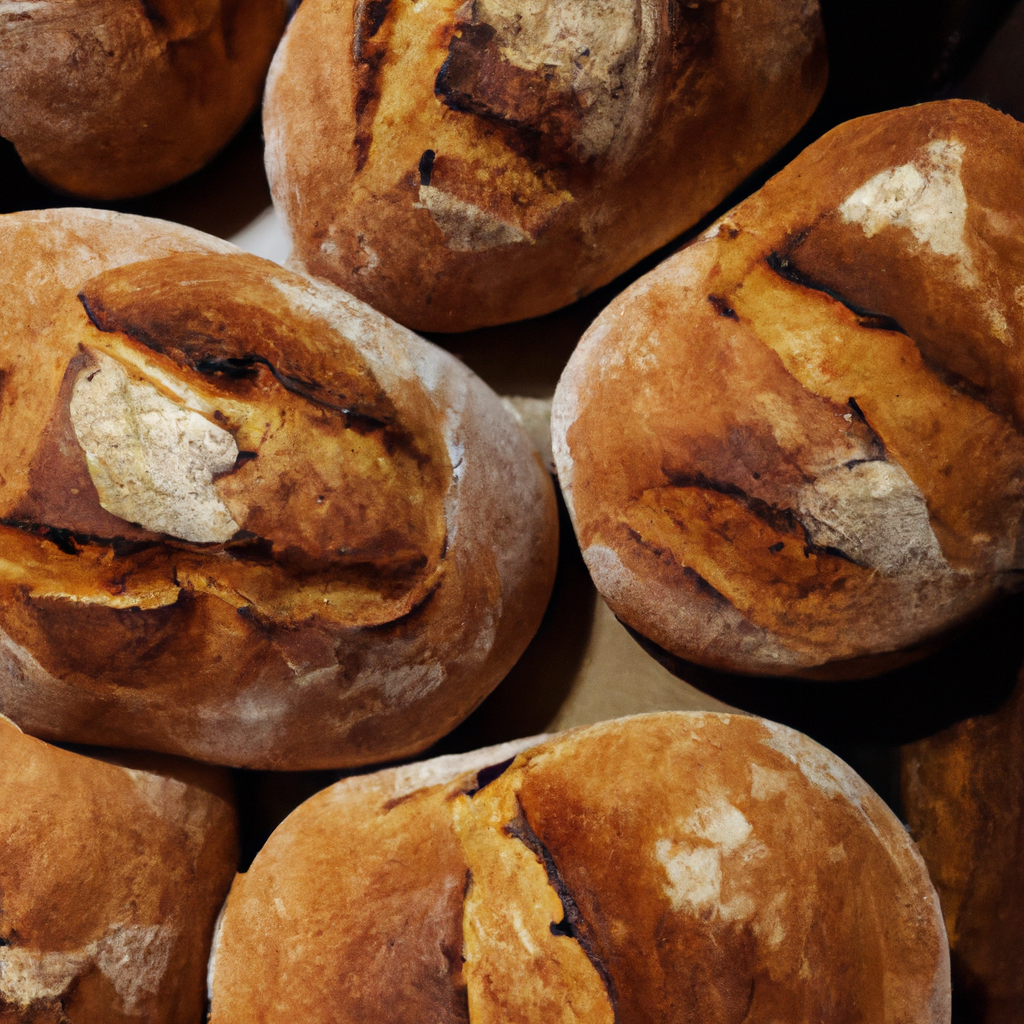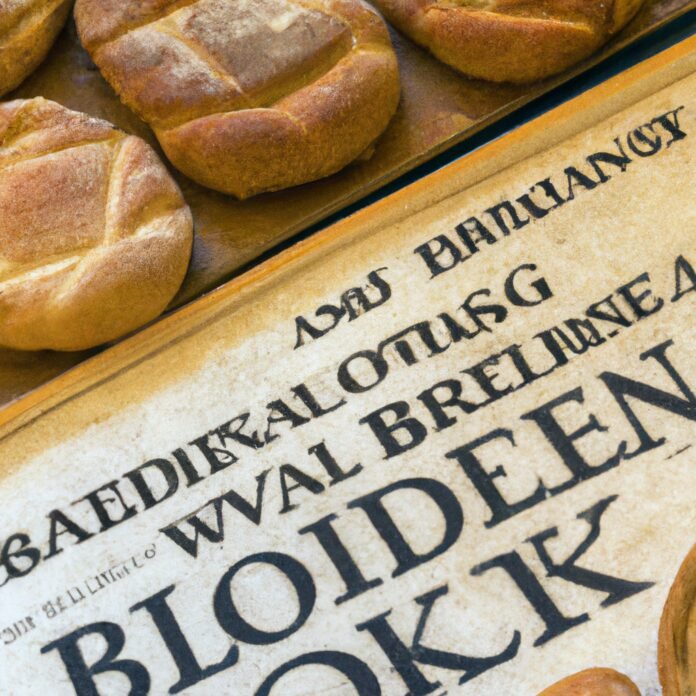The discovery of baking bread dates back to Ancient Egypt. Over the ages, bread baking traditions have traveled through time and space, shaping different loaves for cultures around the world that each reflect the heritage and values of the people who create them. Join us on an adventure through global bread baking traditions to explore an endless variety of flavors and textures.
1. Breaking Bread: Unveiling the Secrets of Global Loaves
Bread. It’s a staple of cuisines all around the world, from the baguettes of France to the naan of India, and everything in between. Every culture has its own variety and its own way to prepare and enjoy bread. Each of these loaves has a story to tell, and one of the most fascinating things about breaking bread is uncovering the tales and secrets of global loaves.
Focaccia, Italy, countless iterations of this oven-baked flatbread have been served across Italy for centuries. Bakers have added their own touches, from olive oil and herbs to tomatoes, cheese, and onions. While focaccia is simple and humble, the richness of its ingredients and the variety of its preparations make it one of the most beloved dishes in the country, a staple at Italian tables.
Injera, Ethiopia, is an fermented flatbread that’s not only flavorful but also nutritious. The dough is made with teff, a gluten-free grain ground into flour and mixed with water. After 24 hours of fermentation, flatbreads are cooked in special pans, giving each one its signature spongy texture. The injera is served with a variety of dishes, from meats and vegetables to lentils and sauces.
Tortillas, Mexico, are thin, round flatbreads made from wheat flour, salt, and a special blend of oil and water. After being rolled out, the tortillas are cooked on hot griddles and served with an array of fillings, from refried beans to stews. They’re also great for snacking, simply sprinkled with salt and folded into a triangle.
Breaking bread reveals hidden secrets about cultures around the globe. From the colorful focaccia in Italy to the flavorful injera of Ethiopia to the versatile tortillas of Mexico, each of these dishes has a special place in different cultures and is enjoyed by countless people around the world.
- Uncovering stories of global loaves
- Traditional focaccia in Italy
- Nutritious injera from Ethiopia
- Tortillas of Mexico
2. Kneading Through Cultures: Exploring Bread Baking Traditions Around the World
From the vast plains of India to the vibrant markets of Central America, bread has created communities around the globe. No matter where you look, you can find people kneading staple grains, creating a diverse range of baked delicacies to enjoy. In this section of the blog, let’s embark on a journey across bread-baking cultures around the world.
1. India: Roti & Naan
- In India, kneading dough is an art that is closely associated with cooking. There is an array of bread styles to choose from, such as roti, naan, puri, thepla, and paratha.
- Roti, India’s unleavened flatbread, is usually made from wheat and accompanied by various meats, savory curries, and lentil dishes.
- Naan, known for its bubbly texture, is lightly cooked in a tandoor oven, and is usually associated with Indian fine dining.
2. Mexico: Tortillas
- Tortillas, a symbol of Mexican culture, is a type of flatbread commonly made of corn or wheat, and served with a range of savory dishes like tacos or burritos.
- For centuries, they have been hand-pressed in kitchens across the country from natural ingredients, lightly-baked on a hot plate, or cooked in a pot.
3. China: Mantou
- Mantou, usually made from wheat flour, are steamed buns which can be found in every corner of China.
- Packed with flavorful fillings of your choice, they make a quick and authentic snack.
- Alternatively, mantou is sometimes served in large jiaozi dumplings, filled with meat and vegetables.
4. United States: Biscuits
- The soft, fluffy texture of an American biscuit is a flavor familiar to many.
- Biscuits are usually made with baking powder or baking soda, allowing the dough to rise.
- These are cooked in an oven, mainly served as a side dish alongside a meat-based meal.
3. Rise and Shine: Delving into the Rich History of Bread Baking Across Nations
Throughout centuries and in countless cultures, bread has been the cornerstone of sustenance. From the ancient Egyptians to our present day methods, bread baking has become an important part of many global traditions.
Italy: Tale as Old as Time
The art of bread-making in Italy has been around since long before recorded time.Italians were using durum wheat to make bread as early as 8000 BC. From the simple focaccia breads to the elaborate and savory ciabatta varieties, Italian breads are widely respected and enjoyed worldwide.
France: Greatness Since the Ancient Regime
France is known to have a rich baking heritage, with many influences from the Celtic Gaulish culture. As early as the 15th century, French bakeries were selling a plentiful selection of breads such as brioche, croissant, and baguettes.
England: Hearty and Filling
The British have long celebrated bread in an array of forms. From traditional loaves to modern artisan creations, England is home to a creative and flavorful baking style. White or Brown loaves, light and fluffy rolls, or the savory, cheese-topped scones – England is no doubt a giant in the bread baking world.
Germany: Dense and Healthy
Known for its hearty and dense breads, Germany is home to wheat and rye varieties that stand out in terms of texture, flavor, and overall healthful benefits. With popular breads such as pumpernickel, pretzels, and weisswurst rolls – German culture truly values bread as a way of life.
The US of A: Blending Cultures and Styles
In the United States, bread serves a dual purpose, as a reminder of our original cultures and an indicator of modern trends. From the plain white loaves of our colonial times, to today’s specialty recipes topped with pesto and cracked pepper – the varieties of American breads are both vast and varied.
From ancient grains and pastries, to modern day hybrids and flavors – bread has been a source of sustenance and pleasure for many generations around the world.
4. Crusts and Crumbs: A Wholesome Exploration of Global Bread Baking Techniques
No matter the continent or culture, bread is a timeless staple of life. Across the globe, from the flatbreads of the Middle East, to banana breads of the Caribbean, unique baking techniques have been passed down through generations to create a vast variety of sensory experiences. Here, we’ll explore the intriguing science and history of various types of bread from around the world.
1) From Dough to Crust
The warm, chewy texture of bread is only possible thanks to the unique biological synergy between the yeast, flour, and water. Kneading the dough helps to activate the proteins found in flour, giving it the structural foundation for all types of breads. While time-honored techniques like folding, coiling, and braiding add to the visual flair, the star of the show lies within the proofing process. Through fermentation, the yeast produces carbon dioxide which promotes bread’s rise and airy texture.
2) All About Crumbs
The crunchy, delicious coating found on the crust of artisanal breads, known as “crumbs”, is what makes the sum greater than its parts. The relevant elements here – butter, sugar, and other flavors – are found in the dough, with the amount of butter and sugar being easily adjustable. Cooking temperature and duration, on the other hand, are what influences the brittleness of the crust. Ovens play an integral role in the indirect transfer of heat, and the temperature, volume, and humidity all interface to affect the final texture.
3) Future of Baking Techniques
Given the recent diversification of cooking styles, automated bread-making tools have become uniquely promising avenues for exploring global flavors. From ultra-high-pressure gas ovens to pod-based cooking systems, culinary enthusiasts are presented with unprecedented levels of control, helping to shape and enhance the traditional baking process. Let’s raise our bread knives in for a sliced piece of a delicious, digital future!
4) A Brief Global Tour
- Japanese Mono-Dough: Found in specialty bakeries, Mono-Dough is made with only sourdough starter cultures and flour. Its mild taste and unique texture make it particularly popular among health-conscious bakers.
- United States: From bagels to pretzels, the US has a famously diverse landscape of bread products – and the added availability of advanced oven technologies allows bakers to create headlines recipes.
- French Baguettes: Well-known for its crisp crusts and light, chewy interiors, the French baguette is a classic classic that is adored around the world. Its avant-garde baking techniques, which use slightly acidic fermentation, make it a truly unique experience.
- Mediterranean Flatbread: Across the Mediterranean, flatbreads are popular reunion foods in Greece, Egypt, and the wider region. Using higher temperatures and quicker fermentation cycles, local techniques produce thin, crispy, and flavorful bread.
Bread baking traditions are truly a fascinating journey through centuries of culture, history, and culture. From the ancient Georgian leavened breads to the sophisticated French baguettes, bread is an indispensable part of our stories and a necessary ingredient in the comfort and satisfaction of our lives. No matter where you go, bread-making is still an integral part of the daily lives of people around the world, and it’s a journey worth taking. Bon Appétit!


